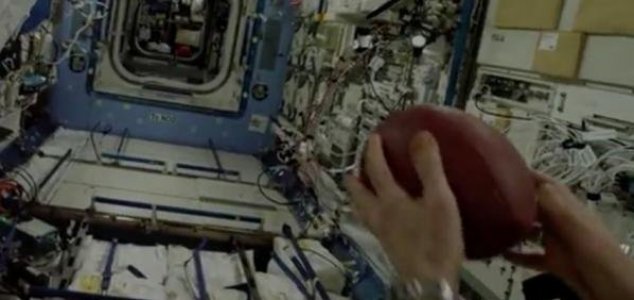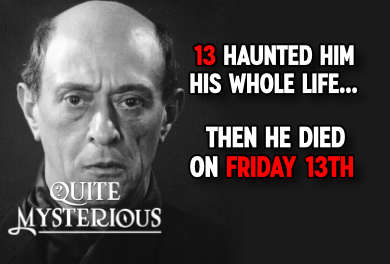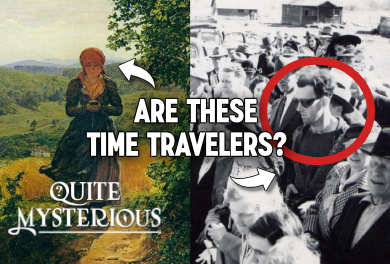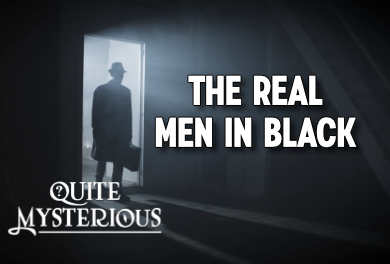Space & Astronomy
February 5, 2017 · 5 comments
5 comments

How far did he really throw the ball ? Image Credit: NASA Johnson Space Center
The International Space Station itself is orbiting the planet at around 17,500 mph, which means that the ball, which was thrown from one end to the other, was traveling at 8,800 yards per second relative to someone standing on the surface of the Earth.
So while the ball really did travel 564,664 yards through space, it was only actually thrown around 80 yards relative to Tim Kopra and the other astronauts aboard the station.
A video of the throw, as well as a more in-depth explanation, can be viewed below.
Source: Space.com | Comments (5)
Astronaut throws a football 564,664 yards
By T.K. RandallFebruary 5, 2017 ·
 5 comments
5 comments
How far did he really throw the ball ? Image Credit: NASA Johnson Space Center
Astronaut Tim Kopra made the record-breaking pass aboard the space station to mark the 2017 Super Bowl.
While the throw was certainly impressive from a technical point of view, the ball didn't actually travel quite as far as the figures suggest - at least, that is, from the perspective of the astronauts.The International Space Station itself is orbiting the planet at around 17,500 mph, which means that the ball, which was thrown from one end to the other, was traveling at 8,800 yards per second relative to someone standing on the surface of the Earth.
So while the ball really did travel 564,664 yards through space, it was only actually thrown around 80 yards relative to Tim Kopra and the other astronauts aboard the station.
A video of the throw, as well as a more in-depth explanation, can be viewed below.
Source: Space.com | Comments (5)

The Unexplained Mysteries
Book of Weird News
AVAILABLE NOW
Take a walk on the weird side with this compilation of some of the weirdest stories ever to grace the pages of a newspaper.
Click here to learn more

Support us on Patreon
BONUS CONTENTFor less than the cost of a cup of coffee, you can gain access to a wide range of exclusive perks including our popular 'Lost Ghost Stories' series.
Click here to learn more
Modern Mysteries, New Age and Prophecies
Israel, Palestine and the Middle-East
Ancient Mysteries and Alternative History
Other World News
Total Posts: 7,768,286 Topics: 325,021 Members: 203,765
Not a member yet ? Click here to join - registration is free and only takes a moment!
Not a member yet ? Click here to join - registration is free and only takes a moment!


































Please Login or Register to post a comment.